Of course, we knew that AI would figure prominently at this year’s CES. It’s the technology story du jour after all. But as CES veterans, we’ve seen such sparkling promises of the next big thing eventually fizzle. 3D televisions, anyone? Thankfully there was plenty of meat-and-potatoes PC tech on display in Las Vegas to satisfy the cravings of PC enthusiasts here and now.
Whether you’re a road warrior, a PC builder, a lover of games both old and new, or a content creator, we saw some truly exciting products for PC users of every stripe, and, yes, some of it even includes AI.
MSI MEG 321URX QD-OLED monitor
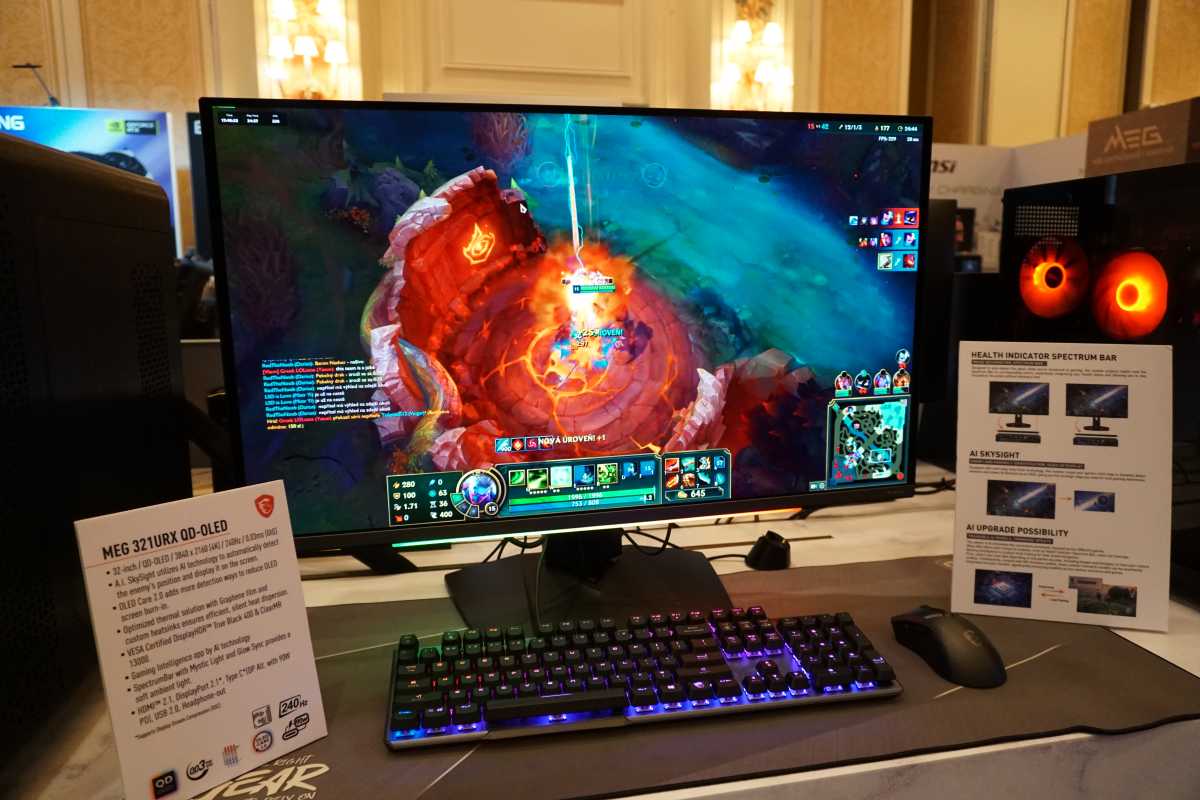
Brad Chacos/IDG
MSI could’ve left well alone with the MEG 321URX QD-OLED monitor. I mean, it’s impressive as hell just off pure specs alone: This 32-inch, 4K, 240Hz OLED monitor with DisplayHDR True Black 400 certification and 99% coverage of the DCI-P3 color spectrum is already better than everyone owns except the 0.01 percent of PC enthusiasts, in a form factor those enthusiasts have been begging for. GIMME!
But MSI didn’t stop there. The company also infused the monitor with several AI capabilities, the most intriguing of which is AI Skylight. In the ultra-popular League of Legends, AI Skylight keeps tabs on where your enemies are elsewhere on the battlefield, cluing you in to incoming hostiles via large red skulls with directional indicators so you’re never caught flat-footed. MSI’s also working on training the AI feature in other esports games like Dota 2, while a separate AI-powered lightbar across the bottom of the display provides quick visual indicators of things like your health in League and your ammo count in Counter-Strike (better make those last few shots count).
Better yet (kinda)? Since the MEG 321URX does all its processing within the monitor itself, it skirts existing cheat detection software so you won’t catch a ban for using the tools. –Brad Chacos
AMD Ryzen 8500G
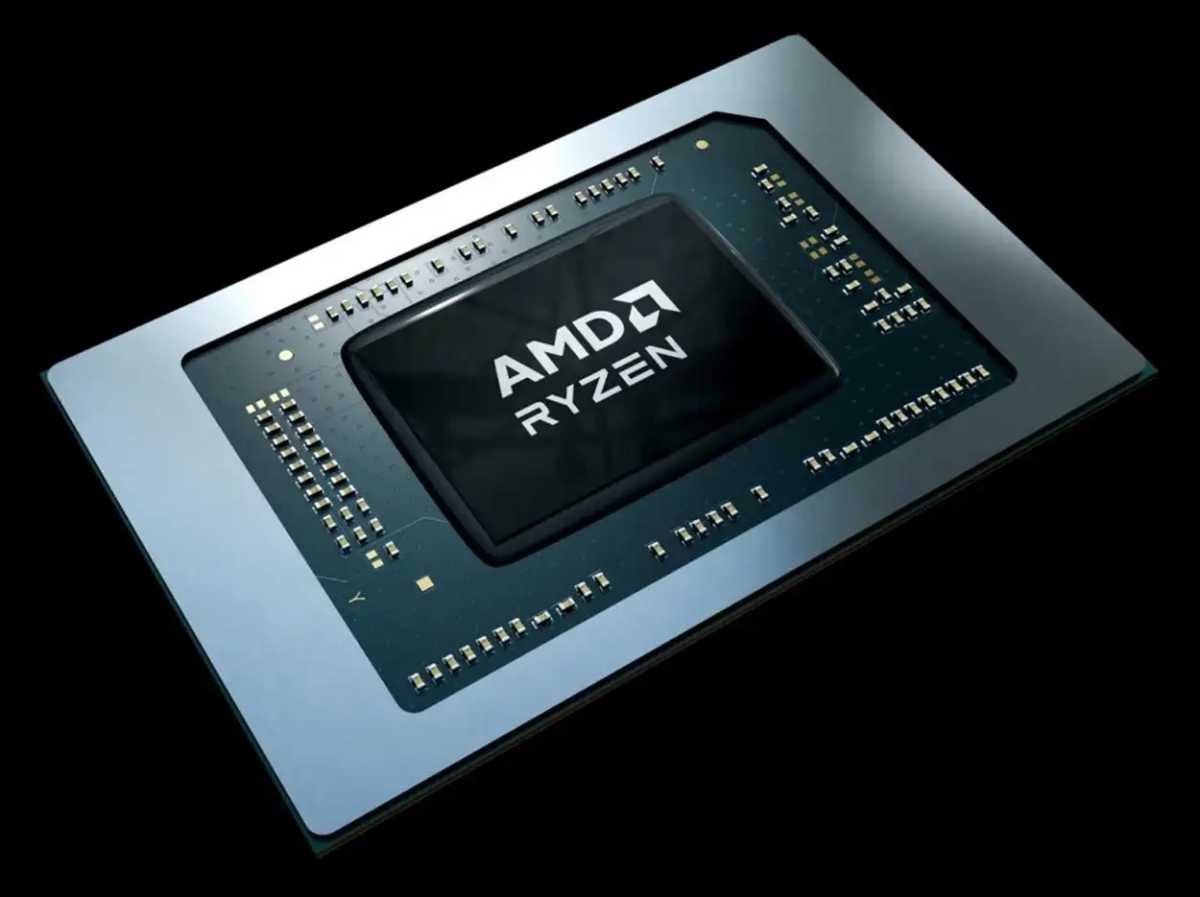
AMD
Six cores, 12 threads, 5.0GHz turbo clock speeds, no AI: $179. Why would we award a Best of CES award to a chip that lacks Ryzen AI, when AMD is the first to release an AI NPU on a desktop processor?
Color me/us a bit skeptical about AI right now, when its value hasn’t yet been proven. And the $229 that AMD is charging for the nearly identical 8600G is $50 more than the 8500G, which at $179 just feels like a solid value. As for Intel, its 14th-gen Raptor Lake Refresh parts just feel a little too similar to the 13th-gen parts right now, lacking a solid gen-over-gen improvement. Maybe further testing will change our minds. –Mark Hachman
MSI Claw

Brad Chacos/Foundry
The battle among handheld gaming PCs continues to rage on, and at CES 2024, an exciting new entrant appeared: MSI’s Claw. Not only is this MSI’s first jump into the handheld arena, it also marks the first handheld to feature Intel’s Core Ultra processor with Arc graphics, which looks to take on AMD’s dominance in the space. With my limited time on the show floor I was impressed by the build quality and design, and the software seems to be coming along nicely, as well. Performance and battery life are still be determined, which can make or break a device, but I believe we now have a viable competitor to the Steam Deck and ROG Ally. — Adam Patrick Murray
MSI’s Claw portable gaming PC is my pick for CES. Not for what it is (because frankly, its chipset is the only interesting thing about it), but for what it represents. The Steam Deck seemed like an experiment two years ago, and being quickly copied by smaller indies that relied upon crowdfunding didn’t change that. But now huge players like Lenovo, Asus, and MSI want a piece of the pie, and can compete at prices below $1,000. It’s clear that the portable gaming PC is a form factor with some staying power. — Michael Crider
Lenovo’s prepper-friendly wireless mouse and keyboard
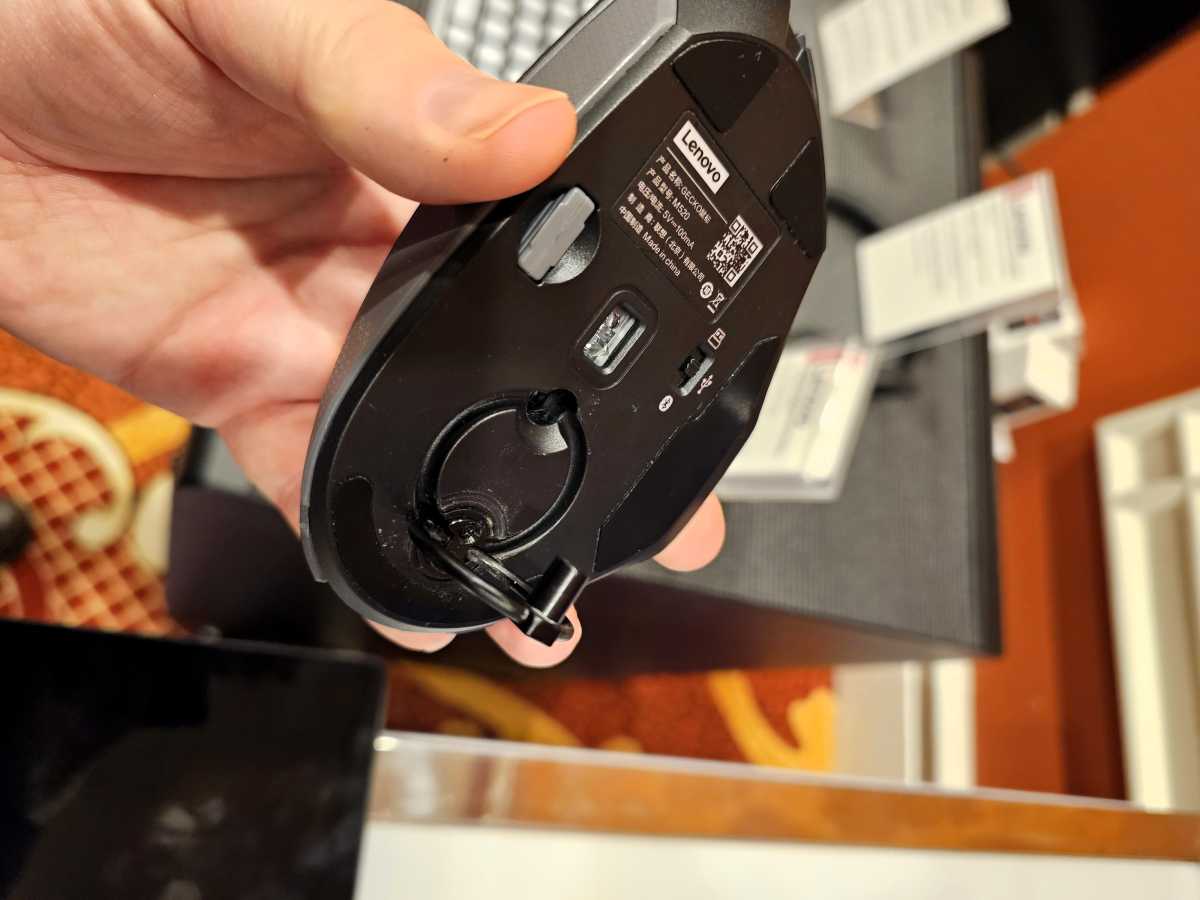
Mark Hachman / IDG
The most unusual concept I’ve ever seen has to be Lenovo’s hand-cranked mouse and spinning dial wireless keyboard. The 12,800 DPI wireless mouse has a pull-out crank that, if you physically spin it around enough times, will generate 30 minutes of power. The wireless keyboard works in a similar fashion but instead of a pull-out crank, you just spin the Surface Dial-like knob on the upper-left corner of the deck. Spin this bad boy for five minutes and boom! You now have enough juice for 30 minutes. It’s definitely an interesting concept that speaks to the prepper zeitgeist, but I’m not sure if it’ll ever be ready for liftoff. After all, it the battery is dead why not just plug into the PC? –Ashley Biancuzzo
ROG NUC gaming PC

Asus
Having a third kid in 2023 was a great joy, but it does mean space is now getting a little tight around my apartment. Suddenly, my giant gaming rig is looking a little oversized — like the equivalent of Hollywood’s iconic Mount Rushmore lumped on the floor between a pile of garish-looking soft toys and definitely-now-a-choking-hazard LEGO blocks.
Thankfully, Asus has fixed my problem by announcing the ROG NUC mini-PC at CES 2024 — and yes, we’ve all seen mini-PCs before, but this is a little different, with a choice of Intel Core Ultra 9 or Core Ultra 7 processors, Nvidia RTX 4060 or 4070 GPUs, and up to 32GB DDR5 / 5600MHz RAM. It’s got me salivating at the prospect of the kind of high-end gaming I’ll be able to do on a PC whose case is an apartment-friendly 2.5 liters in volume.
Although small, the ROG NUC’s connectivity looks state of the art, too. The desktop has Wi-Fi 6E and Bluetooth 5.3, and no less than six USB-A ports, a Thunderbolt 4 port, HDMI port, 2x display ports, dual 3.5mm audio jacks, and a full-sized SD card reader. No word from Asus about pricing yet, so fingers crossed it will land in a hip-pocket-friendly price zone. –Dominic Bayley
Dual-screen laptops (Lenovo Yoga Book 9i & Asus Zenbook Duo)
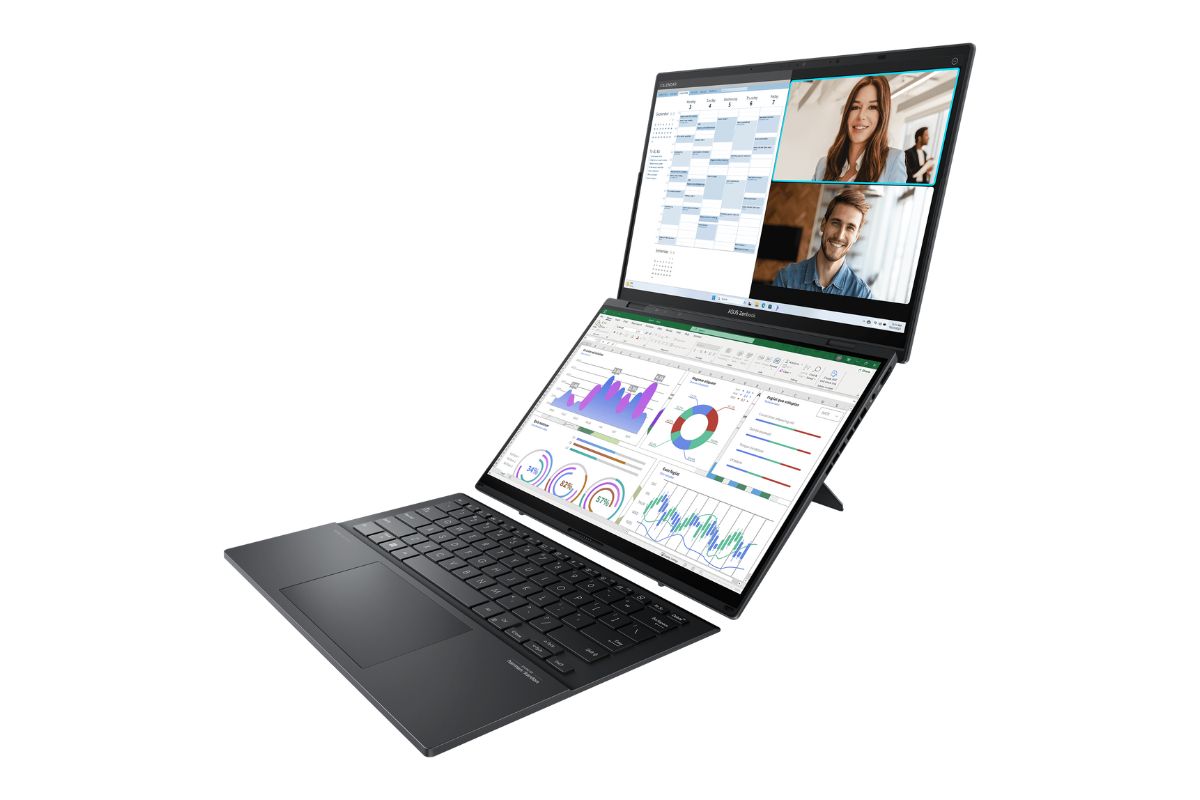
Asus
I love screen real estate—and so I’ve always hated long sessions on just a laptop. But two new dual-screen notebooks shown at this year’s CES are making me rethink my stance — they offer the multi-monitor experience without the hassle of actually packing and setting up a portable display. I’m partial to Lenovo’s Yoga Book 9i, which is a bit smaller and offers more flexibility with the detachable keyboard’s positioning, but Asus’s equally luxe yet cheaper (by $500!) Zenbook Duo looks just as tempting. I don’t need a new laptop, but I now want one. –Alaina Yee
The two full-sized OLED screens on Lenovo’s brand-new Yoga Book 9i laptop are absolutely stunning and versatile as hell. You can use it like a conventional clamshell laptop or a dual-screen PC setup. If you’re going for the latter, the screens can be positioned either horizontally or vertically. The whole package weighs just under 3 pounds as well, which is impressive given the additional display. It even features the latest 14th-Gen Intel Core U-class CPU and a maximum of 32GB of RAM and 1TB of SSD storage. I’m really looking forward to trying out this device myself. –Ashley Biancuzzo
Asus BTF ecosystem
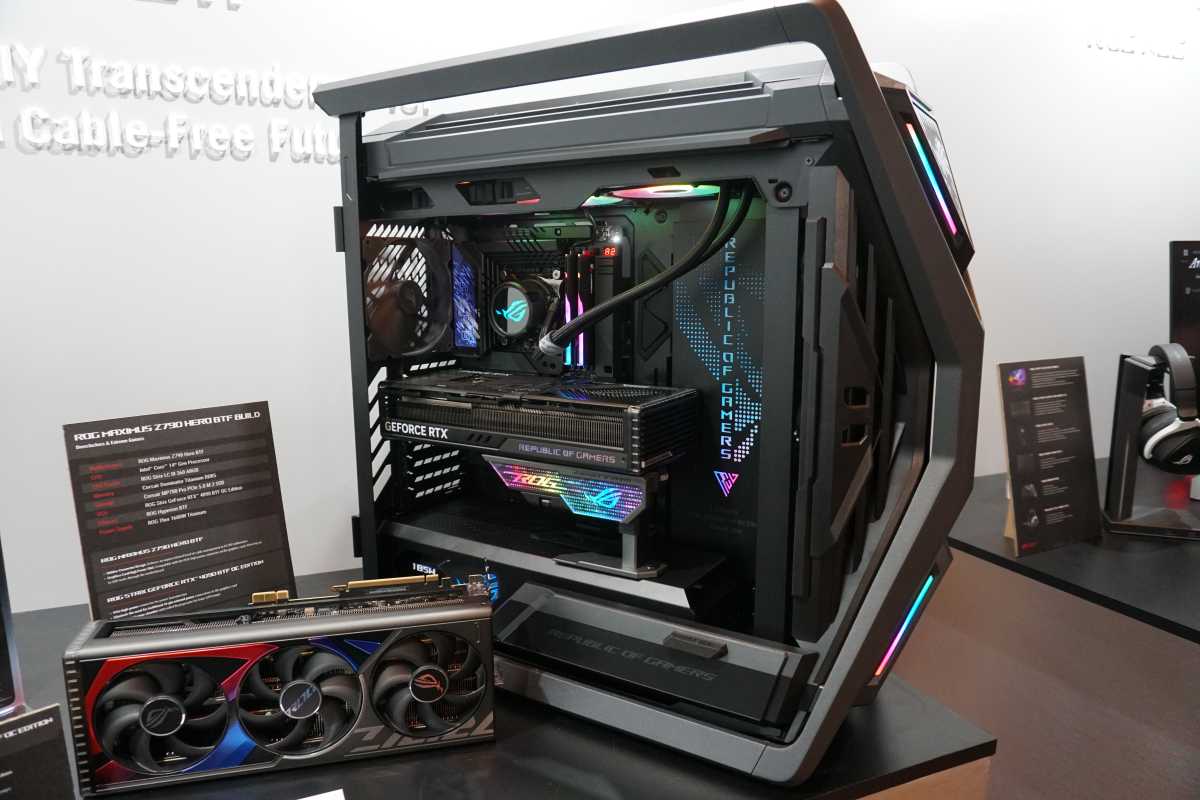
Brad Chacos/IDG
We declared the War on Cables the hottest PC trend of 2023 after Computex last summer, and at CES 2024, the concept got real. MSI and Maingear were busy showing off their “Project Zero” initiative for a cable-free desktop PC, but Asus’ rival concept — dubbed “BTF,” for “Back to the Future” — impressed me the most.
While all these concepts move most wiring to the back of the motherboard for a pristine aesthetic, only Asus uses a proprietary 600W PCIe high-power connector on its graphics cards as well, letting you slot them into the motherboard without any power cables poking out from the frontside, for a truly wireless interior (well, except the tubing for AIO CPU coolers, natch). It’s a wickedly clean look, though Asus motherboards will still work just fine with any GPU if you’d like.
Asus expects to start selling bundled BTF kits (motherboard, graphics card, case) under its TUF brand sometime around February, while a higher-end ROG Strix BTF bundle will land late in this quarter. Even better, Asus already signed up nine case partners — including heavyweights like Corsair, Lian Li, Cooler Master, Silverstone, and BeQuiet — who’ve pledged to support the BTF project. The War on Cables is beginning in earnest. –Brad Chacos
Hyperkin Mega 95
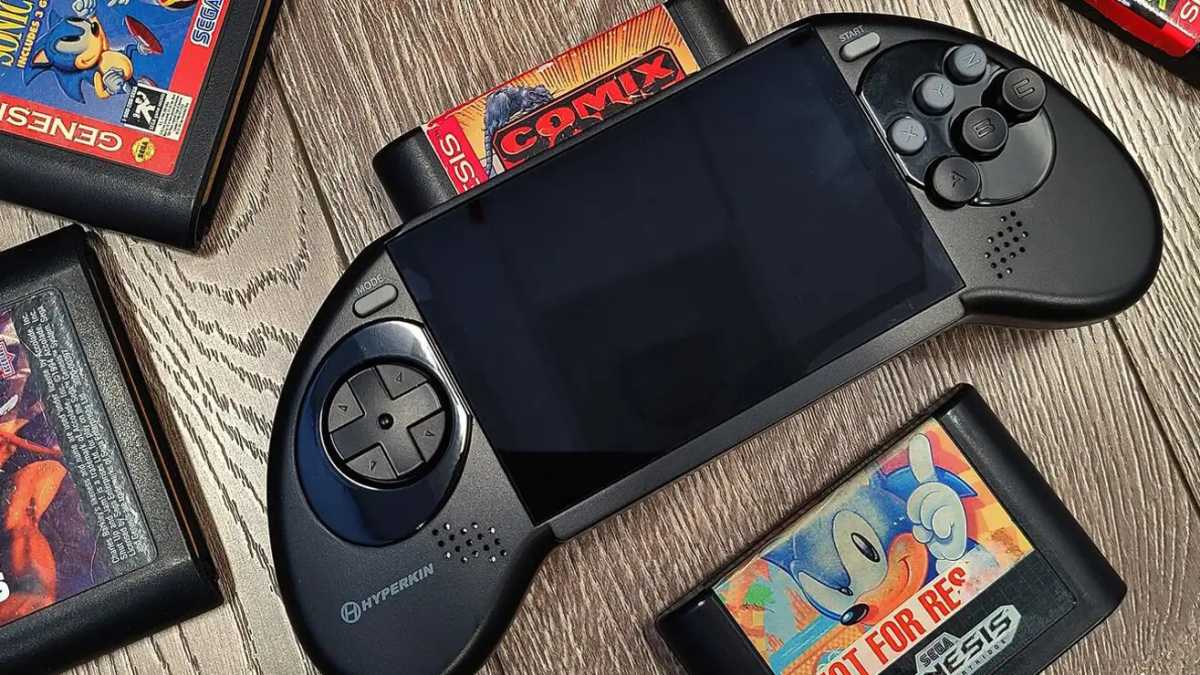
Hyperkin
Grab those baggy pants, flip your hat backwards, and dust off the old boxes of Sega Genesis cartridges. Hyperkin is here with the Mega 95, a new handheld console capable of playing your old Sega Genesis cartridges. Modeled after a Genesis controller, it comes with a 5-inch screen and up to 10 hours of battery life. The screen will also be capable of toggling between 4:3 and 16:9 aspect ratio modes. Eat my shorts, Genesis Nomad.
This new Mega 95 is seemingly a handheld version of Hyperkin’s MegaRetroN HD console, but with some upgrades. Not only will it allow you to take your games on the go, but it also comes with a dock to connect to your TV via HDMI and two ports for controllers. Get ready to fire up Sonic again and finally collect those last Chaos Emeralds. –Sam Singleton
Thermaltake Tower 300
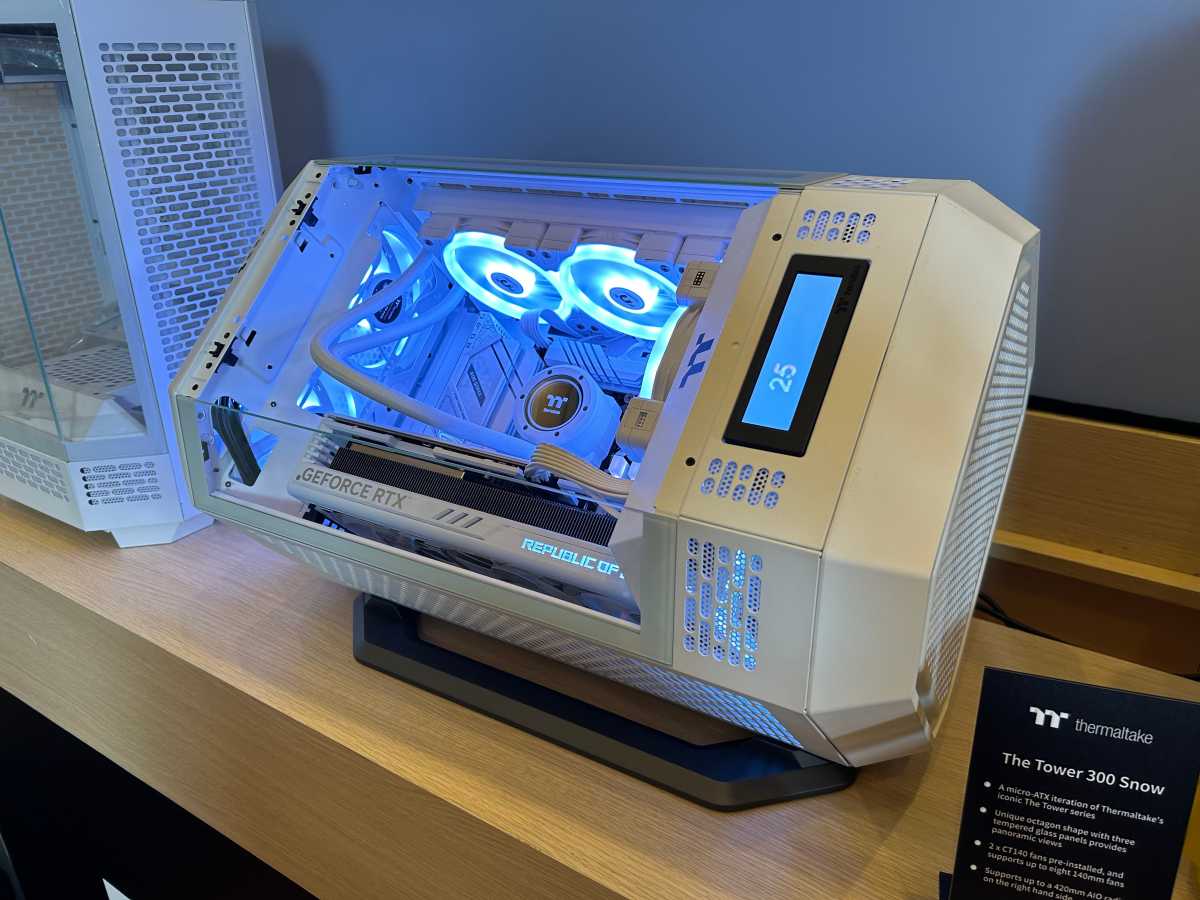
Foundry
The Thermaltake Tower 300 stood out in a sea of “just another box” PC cases this year. No six sides here, we’re talking octagonal, with wicked airflow from bottom to top, unless you’ve got it on it’s side with the optional stand that is giving me real Doom Slayer power-up vibes. The real kicker here is that while the Tower 300 can support MiniITX motherboards, it’s designed around the MicroATX form factor which is something we haven’t seen much of lately. Oh, and if you don’t like the Thermaltake 25th Anniversary Blue, you can opt for traditional white and black, but also yellow, green, and turquoise! –Keith May
Lenovo ThinkBook Plus Gen 5 Hybrid

Lenovo
CES 2024 had its fair share of interesting laptop configurations and form factors – take the two multi-monitor laptops above as prime examples – but Lenovo’s ThinkBook Plus Gen 5 Hybrid offers its own very unique take on the genre. As a Windows laptop the specs are pretty standard: Core 7 Ultra CPU, Arc graphics, 32GB RAM, 1TB storage. What makes it stand out is how cleverly it functions as both a Windows laptop, when the 14.5 inch OLED panel is docked in the keyboard, or as a conventional Android tablet when the panel is undocked, complete with a built-in Snapdragon processor, 12GB of RAM and 256GB of storage, and support for touch or pen input.
Yes, all the PC parts are in the keyboard! That means that the keyboard itself can be attached to a large monitor to form yet a third configuration that’s suited to stationary desktop work. How clever is that? –Katherine Stevenson
2024 Razer Blade 16
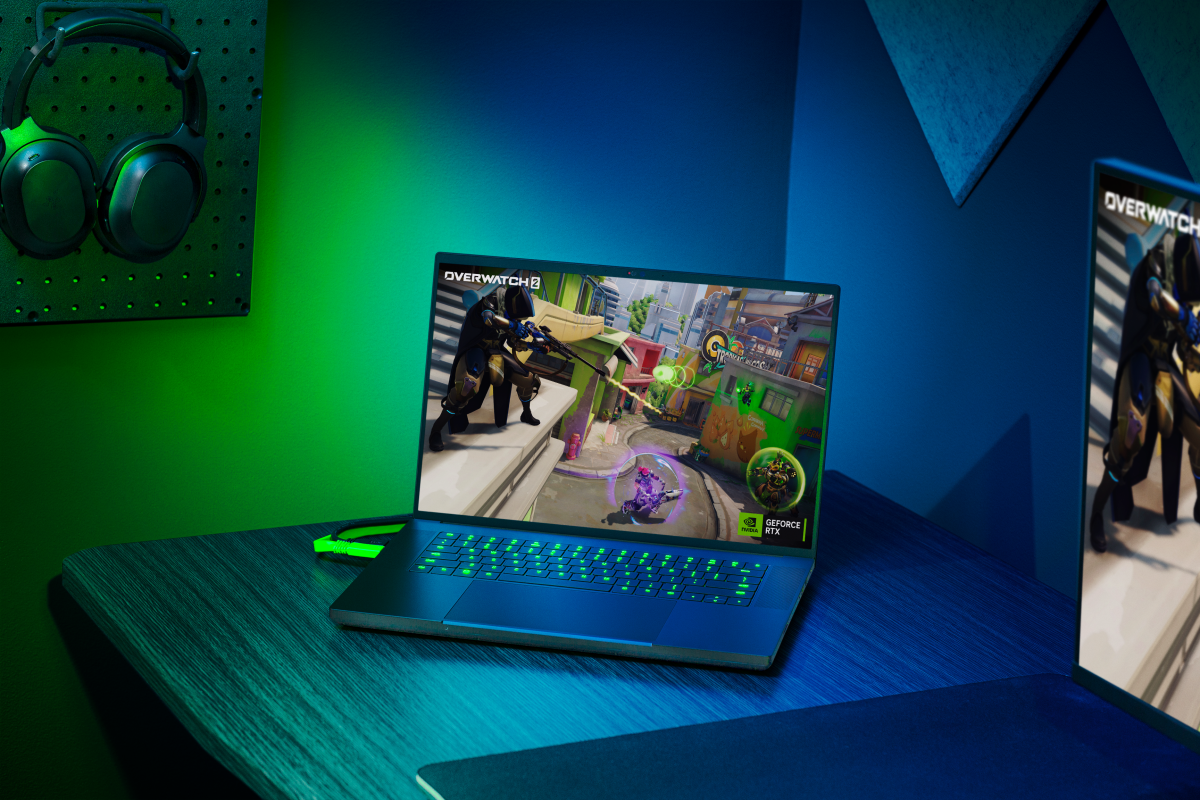
Razer
Every year Razer’s Blade 14 gaming laptop leaves me a little awestruck, its portability, power-to-size ratio, and quality of its visuals just seems to all meld together perfectly — plus, it arguably offers the best bang for buck in Razer’s lineup. This year, however, it’s the laptop’s larger sibling, the Razer Blade 16, that’s really caught my eye — the reason? Its OLED display.
I’ve been waiting for OLED displays to come of age, and go one better than the 15-inch QHD 240Hz display we saw in the 2023 Razer Blade 15, and the Blade 16 does just that, upping the ante to a whopping QHD+ (2560×1600) OLED display with a 240Hz refresh rate in a larger 16-inch panel, in what Razer claims is the first of its kind ever made. Larger, more fluid, even more gorgeously rendered OLED visuals? Yes, please!
Under the hood, the top-tier Blade 16 also looks absolutely ripped, with a 14th-gen Intel Core i9–14900HX CPU and GeForce RTX 4090 GPU onboard. It’s loaded with the kind of hardware that could make me a legend, if not a demi-god, in games like, Counterstrike 2 and Fortnite. –Dominic Bayley
Alienware AW3225QF OLED Monitor
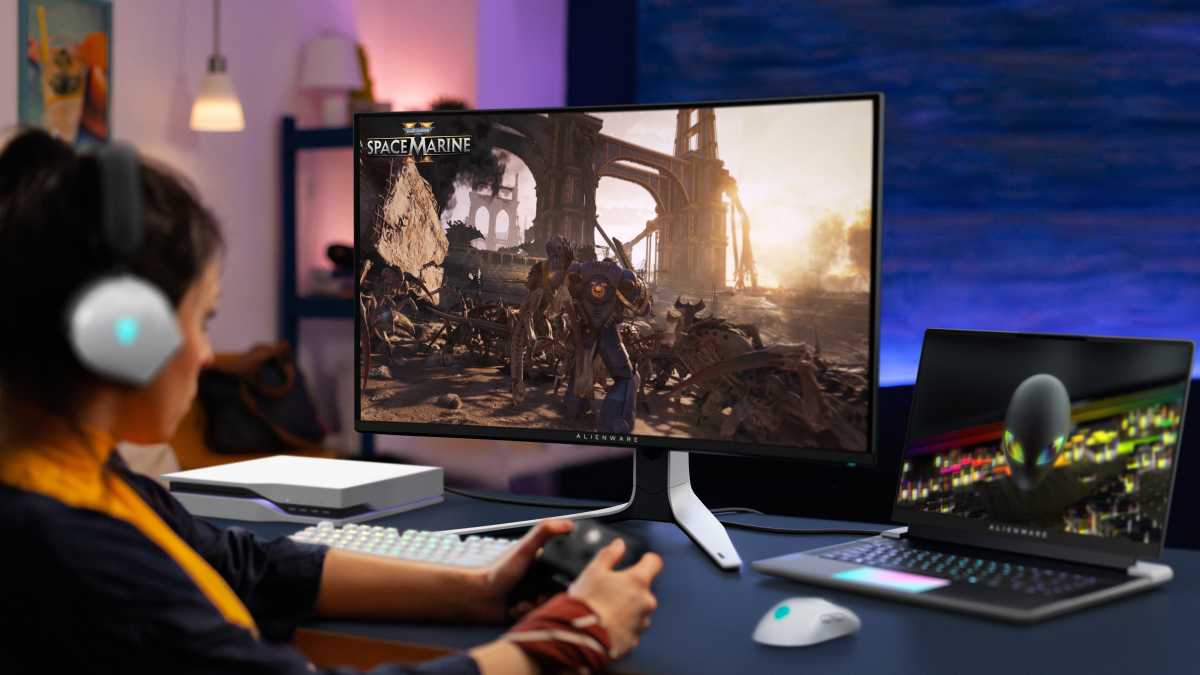
Dell
Dell has already made a splash in gamer circles with its OLED ultrawides, combining the much sought-after premium panel with surprisingly attainable prices. But the 32-inch Alienware AW3225QF might just become the large-format monitor of choice for desktop and laptop users who want to revel in both games and standard media. Its 4K resolution and 240Hz speed mean it’s ideal for showing off both PC and console games at their best, with a 1000-nit peak brightness that makes it the better of many OLED monitors already on the market.
With a subtle curve, ultra-thin panel, and both HDMI and DisplayPort 2.1 options, it boasts both looks and capability. I also dig the bottom-mounted USB-A and USB-C ports, all the easier for plugging in a phone or accessories. While it doesn’t have the lightning speed of the smaller Alienware 27-inch OLED (also on display at CES), it’s certainly a showpiece for anyone who’s built a desk setup with a focus on visual splendor. The AW3225QF is currently available from Dell’s online store for $1199.99. –Michael Crider
MemryX MX3

Mark Hachman / IDG
The MemryX MX3 is the first third-party AI accelerator card to land in a PC. The company’s debut effort may be of modest value (MemryX claims 40 TFLOPs per card, which isn’t that different than some of the NPU power that chip vendors currently boast.)
But we may be on the cusp of a moment where a new generation of AI chip startups launch AI accelerator cards for the PC. Lenovo is already planning to include them in a ThinkCentre desktop, and says there are more out there than we’ve heard of. MemryX may not be the best of this bunch, but it’s at the surface of a movement that may alter the landscape of the PC. –Mark Hachman
Hardware we could do without: Transparent TVs
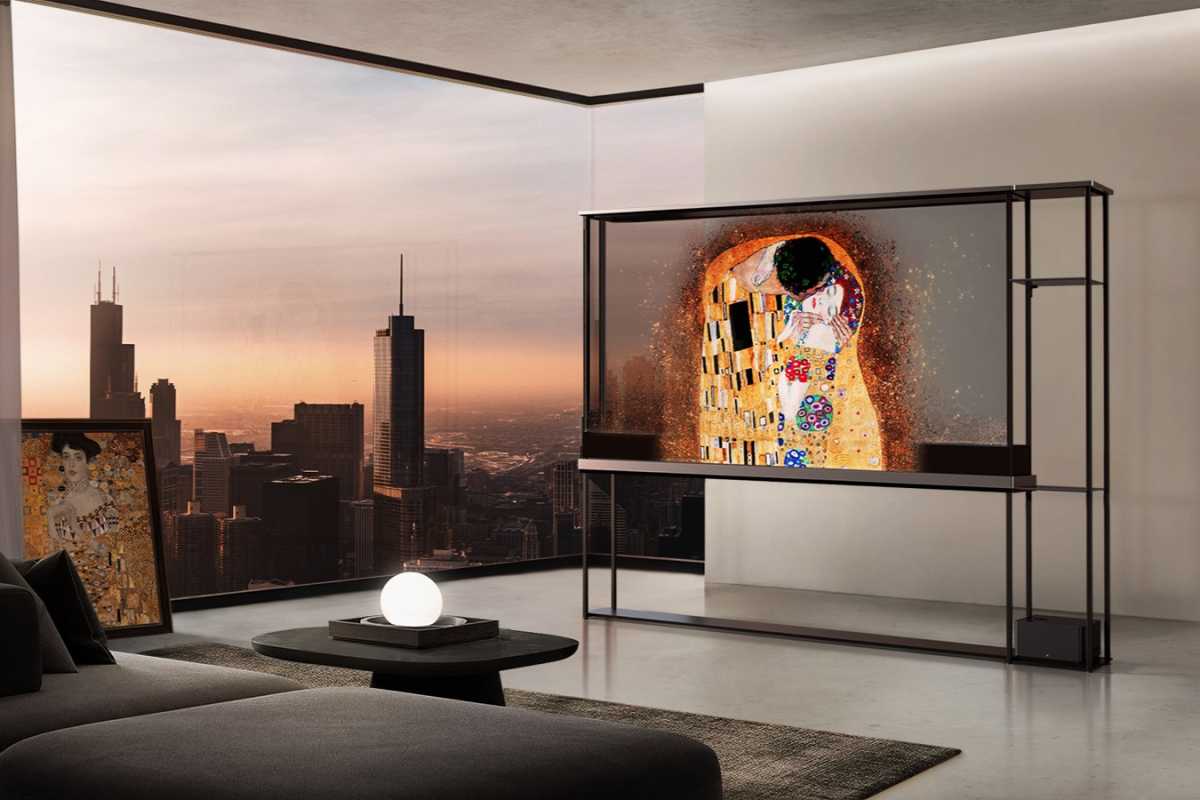
LG
I saw transparent screens at CES more than a decade ago. They were just as dumb then as they are now. Outside of some extremely niche applications in advertising and public signage, there’s simply no reason a consumer would want to look at both a TV or monitor-sized screen (with a worse image than a standard one) and whatever’s behind it. Which is usually a blank wall. There are uses for this technology — smart glasses come to mind, to say nothing of heads-up displays in all kinds of vehicles. But trying to put them in consumers’ homes reeks of an industry desperate for a gimmick to push. –Michael Crider




